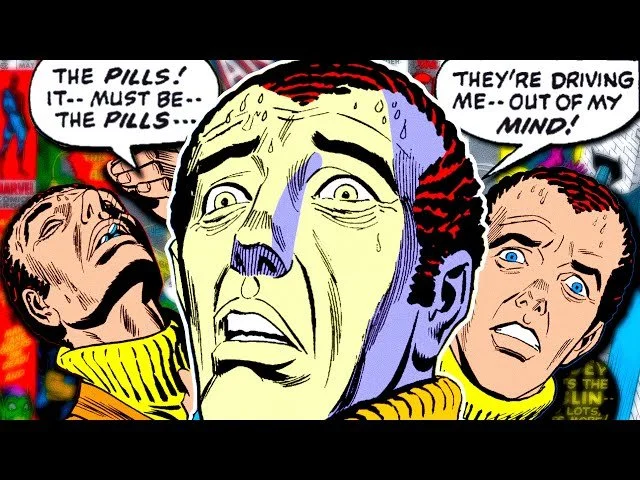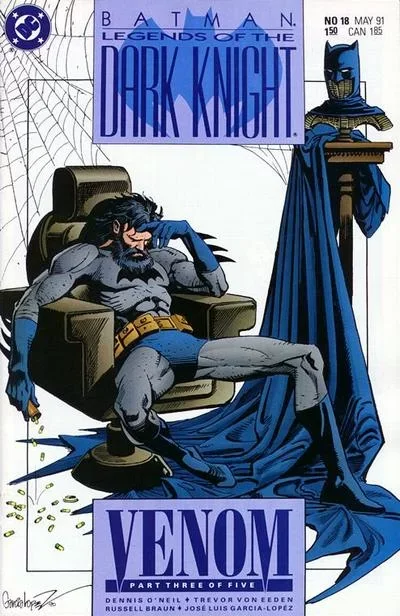Heroes Who Fell: What Comic Books Teach Us About Addiction and Redemption
We grow up believing heroes don’t fall. They stand tall, speak with conviction, and always find a way to save the day. But for anyone who’s lived long enough, you realize that’s not how real life works. Heroes bleed. They break down. They relapse. They lose themselves. And then, if they’re lucky — they find the strength to start again.
Addiction has always been one of the quietest storylines in our world. It doesn’t get the big soundtrack or the slow-motion fight scene. It’s something that happens behind closed doors — in the silence between victories.
But in the pages of comic books, the masks come off. The stories get honest. And sometimes, those stories mirror the same kind of recovery journeys we see every day at Gambit Recovery.
Yes — Gambit Recovery is comic themed. The houses are named after heroes, villains, and antiheroes not just because founder Tom Fay is a big nerd (he absolutely is), but because it runs deeper than that. Comics have always been modern myths about struggle, identity, and redemption — the same themes that define recovery.
And the name “Gambit” itself isn’t just a nod to a favorite X-Man. It’s rooted in the real meaning of the word: an opening act involving risk — a bold first move that could change everything. That’s what walking into sobriety is. A risk. A sacrifice. A leap of faith that says, “I’m done surviving. I’m ready to live.”
Because whether you’re a superhero, an antihero, or someone just trying to rebuild their life, the journey always begins the same way — with courage, uncertainty, and the decision to try.
Tony Stark – The Man Inside the Armor
Long before cinematic universes and billion-dollar suits, Iron Man told a story that had nothing to do with lasers or villains.
In the 1979 arc “Demon in a Bottle,” Tony Stark — the genius inventor behind the armor — faces a far more personal threat: his own drinking. Beneath the brilliance and swagger was a man numbing pain he refused to name.
The series didn’t glorify his addiction. It showed the cost — isolation, paranoia, loss. But it also showed recovery: the moment Tony looked in the mirror and decided that saving the world meant nothing if he couldn’t first save himself.
That’s a truth many of us learn the hard way: no armor can protect you from what’s happening inside.
Iron Man (Tony Stark) – Marvel Comics, “Demon in a Bottle” (Iron Man Vol. 1 #128, 1979).
Cover and character art © Marvel Comics.
Roy Harper – When the Sidekick Breaks Down
In 1971, DC Comics released a story that stunned readers. Roy Harper, better known as Speedy, Green Arrow’s young protégé, was shown injecting heroin. The issue — Green Lantern/Green Arrow #85-86 — was raw, uncomfortable, and brutally honest.
Roy wasn’t fighting aliens or monsters. He was fighting withdrawal. His mentor’s disbelief mirrored society’s at the time — “Not my kid. Not my friend.” But through that pain came something powerful: visibility.
For the first time, addiction wasn’t just a villain’s plot device. It was portrayed as a real human struggle, and a reminder that the people closest to us might be silently falling apart.
Roy Harper (Speedy) – DC Comics, “Snowbirds Don’t Fly” (Green Lantern/Green Arrow #85–86, 1971).
Cover and interior art © DC Comics.
Harry Osborn – Legacy, Pressure, and Escape
The Amazing Spider-Man #96-98 made history by breaking the Comics Code Authority’s rules to tell a necessary story. Peter Parker’s best friend, Harry Osborn, spirals into drug addiction while dealing with his father’s expectations and his own insecurities.
Harry’s downfall isn’t flashy — it’s painfully ordinary. He reaches for pills to escape fear, shame, and loneliness. And that’s what makes it so familiar.
Addiction often hides behind success, privilege, or a last name. It doesn’t care who your father is or what you’ve built.
It was one of the first mainstream reminders that mental health and substance abuse don’t discriminate — they devastate.
Harry Osborn – Marvel Comics, The Amazing Spider-Man #96–98 (1971).
Cover and character art © Marvel Comics.
Batman – Addicted to Strength
Even Bruce Wayne, the ultimate symbol of discipline and control, has fallen prey to dependence. In Legends of the Dark Knight: Venom, Batman becomes hooked on a performance-enhancing drug that makes him stronger, faster, and ruthless.
But with every pill, he loses more of himself.
When he finally locks himself in the Batcave to detox, he’s forced to face the truth: his need for control had become another form of addiction.
It’s a reminder that recovery isn’t always about substances. Sometimes it’s about confronting the behaviors and beliefs that keep us chained, the need to prove, to dominate, to hide.
Batman (Bruce Wayne) – DC Comics, “Venom” arc (Legends of the Dark Knight #16–20, 1991).
Cover and character art © DC Comics.
Why These Stories Matter
Comic books have always reflected the times we live in. Behind the explosions and catchphrases are moral lessons — hope, justice, self-forgiveness.
When these stories dared to talk about addiction, they shattered stigma. They showed readers that recovery isn’t just possible — it’s heroic.
At Gambit Recovery, we see the same arc unfold every day. People come to us broken, doubting, angry, or scared — and leave with community, purpose, and a story worth telling. Not because the pain disappeared, but because they faced it.
Like Tony, Roy, Harry, or Bruce — they learned that redemption doesn’t come from perfection. It comes from persistence.
The Hero’s Journey Isn’t About the Cape
The word Gambit means taking a risk for a greater purpose — and in recovery, that’s exactly what we ask of ourselves every day. To take the first step. To face the unknown. To bet on a future we can’t yet see.
It’s not about being fearless; it’s about being brave enough to walk through fear.
Because the truth is, people in recovery aren’t so different from the heroes we read about. They rise after falling, they carry scars instead of trophies, and they keep moving forward even when the odds are stacked against them.
The cape, the mask, the superpowers — they’re just symbols. The real power is the willingness to change.
So yes, Gambit Recovery is comic themed — but it’s more than that. It’s built on the belief that every person, no matter their past, has a story worth rewriting.
And like every great comic, yours doesn’t end with tragedy. It begins with transformation.
If you’re ready to take your own gambit — to make that risky, courageous move toward a better life — we’ll meet you at the starting line.
No cape required.
If you or someone you know is struggling with addiction, visit SAMHSA.gov for national support resources or contact Gambit Recovery directly.




